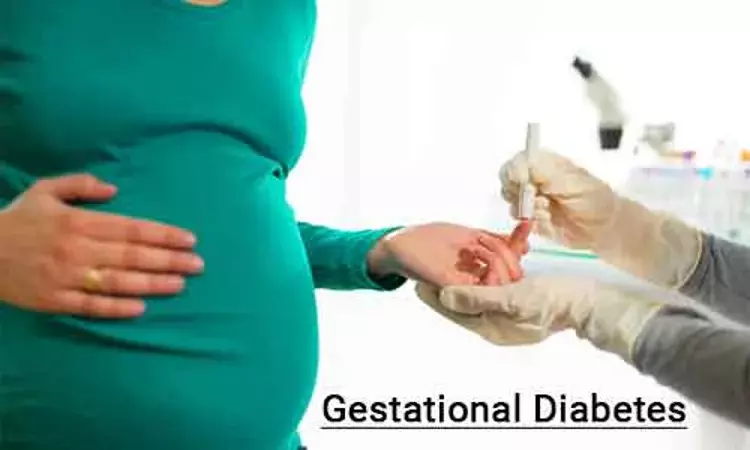- Home
- Medical news & Guidelines
- Anesthesiology
- Cardiology and CTVS
- Critical Care
- Dentistry
- Dermatology
- Diabetes and Endocrinology
- ENT
- Gastroenterology
- Medicine
- Nephrology
- Neurology
- Obstretics-Gynaecology
- Oncology
- Ophthalmology
- Orthopaedics
- Pediatrics-Neonatology
- Psychiatry
- Pulmonology
- Radiology
- Surgery
- Urology
- Laboratory Medicine
- Diet
- Nursing
- Paramedical
- Physiotherapy
- Health news
- Fact Check
- Bone Health Fact Check
- Brain Health Fact Check
- Cancer Related Fact Check
- Child Care Fact Check
- Dental and oral health fact check
- Diabetes and metabolic health fact check
- Diet and Nutrition Fact Check
- Eye and ENT Care Fact Check
- Fitness fact check
- Gut health fact check
- Heart health fact check
- Kidney health fact check
- Medical education fact check
- Men's health fact check
- Respiratory fact check
- Skin and hair care fact check
- Vaccine and Immunization fact check
- Women's health fact check
- AYUSH
- State News
- Andaman and Nicobar Islands
- Andhra Pradesh
- Arunachal Pradesh
- Assam
- Bihar
- Chandigarh
- Chattisgarh
- Dadra and Nagar Haveli
- Daman and Diu
- Delhi
- Goa
- Gujarat
- Haryana
- Himachal Pradesh
- Jammu & Kashmir
- Jharkhand
- Karnataka
- Kerala
- Ladakh
- Lakshadweep
- Madhya Pradesh
- Maharashtra
- Manipur
- Meghalaya
- Mizoram
- Nagaland
- Odisha
- Puducherry
- Punjab
- Rajasthan
- Sikkim
- Tamil Nadu
- Telangana
- Tripura
- Uttar Pradesh
- Uttrakhand
- West Bengal
- Medical Education
- Industry
Gestational diabetes in mother associated with fetal hypoxia at birth: Study

Finland: Children born to women with gestational diabetes mellitus (GDM) are at increased risk of fetal hypoxia, states a recent study. The study, published in the journal Acta Diabetologica, showed GDM to be associated with intrapartal ZigZag pattern and late decelerations, low 5-min Apgar scores, and cord blood academia at birth.
Gestational diabetes is a form of high blood sugar that affects pregnant women. Worldwide, 16% of live childbirths were associated with some form of maternal hyperglycemia in pregnancy, 84% of which are GDM. If left untreated, it can lead to maternal and fetal complications.
Previous studies have shown cardiotocographic (CTG) fetal heart rate (FHR) monitoring to have only limited benefits in decreasing adverse outcomes in pregnancies with GDM. Considering this Mikko Tarvonen, Helsinki University Central Hospital, Helsinki, Finland, and colleagues aimed to evaluate the association between the recently reported ZigZag pattern (FHR baseline amplitude changes of > 25 bpm with a duration of 2–30 min) and asphyxia-related neonatal outcomes in GDM pregnancies.
For this purpose, the researchers recorded intrapartal CTGs in a one-year cohort of 5150 singleton childbirths. Intrapartal CTGs were recorded in a one-year cohort of 5150 singleton childbirths. The following CTG changes were evaluated: ZigZag pattern, saltatory pattern, late decelerations, episodes of tachycardia and bradycardia, reduced variability, and uterine tachysystole.
The cohort was divided into three groups: women with GDM, women with normal oral glucose tolerance test (OGTT), and women with no OGTT performed. Umbilical artery (UA) blood gases, Apgar scores, neonatal respiratory distress, and neonatal encephalopathy were used as outcome variables.
Based on the study, the researchers reported the following findings:
- GDM was diagnosed in 12.1%, OGTT was normal in 79.9%, and OGTT was not performed in 8.0% women.
- Hypoxia-related ZigZag patterns (OR 1.94) and late decelerations (OR 1.65) of FHR, as well as a greater risk of fetal asphyxia (UA pH < 7.10 and/or UA BE < -12.0 meq/L and/or Apgar scores < 7 at 5-min) (OR 6.64) were observed in those with GDM compared with those without GDM.
"Our findings showed that GDM is associated with intrapartal ZigZag pattern and late decelerations, cord blood acidemia and low 5-min Apgar scores at birth indicating increased occurrence of fetal hypoxia in GDM pregnancies," concluded the authors.
Reference:
The study titled, "Intrapartal cardiotocographic patterns and hypoxia-related perinatal outcomes in pregnancies complicated by gestational diabetes mellitus," is published in the journal Acta Diabetologica.
DOI: https://link.springer.com/article/10.1007/s00592-021-01756-0
Dr Kamal Kant Kohli-MBBS, DTCD- a chest specialist with more than 30 years of practice and a flair for writing clinical articles, Dr Kamal Kant Kohli joined Medical Dialogues as a Chief Editor of Medical News. Besides writing articles, as an editor, he proofreads and verifies all the medical content published on Medical Dialogues including those coming from journals, studies,medical conferences,guidelines etc. Email: drkohli@medicaldialogues.in. Contact no. 011-43720751


